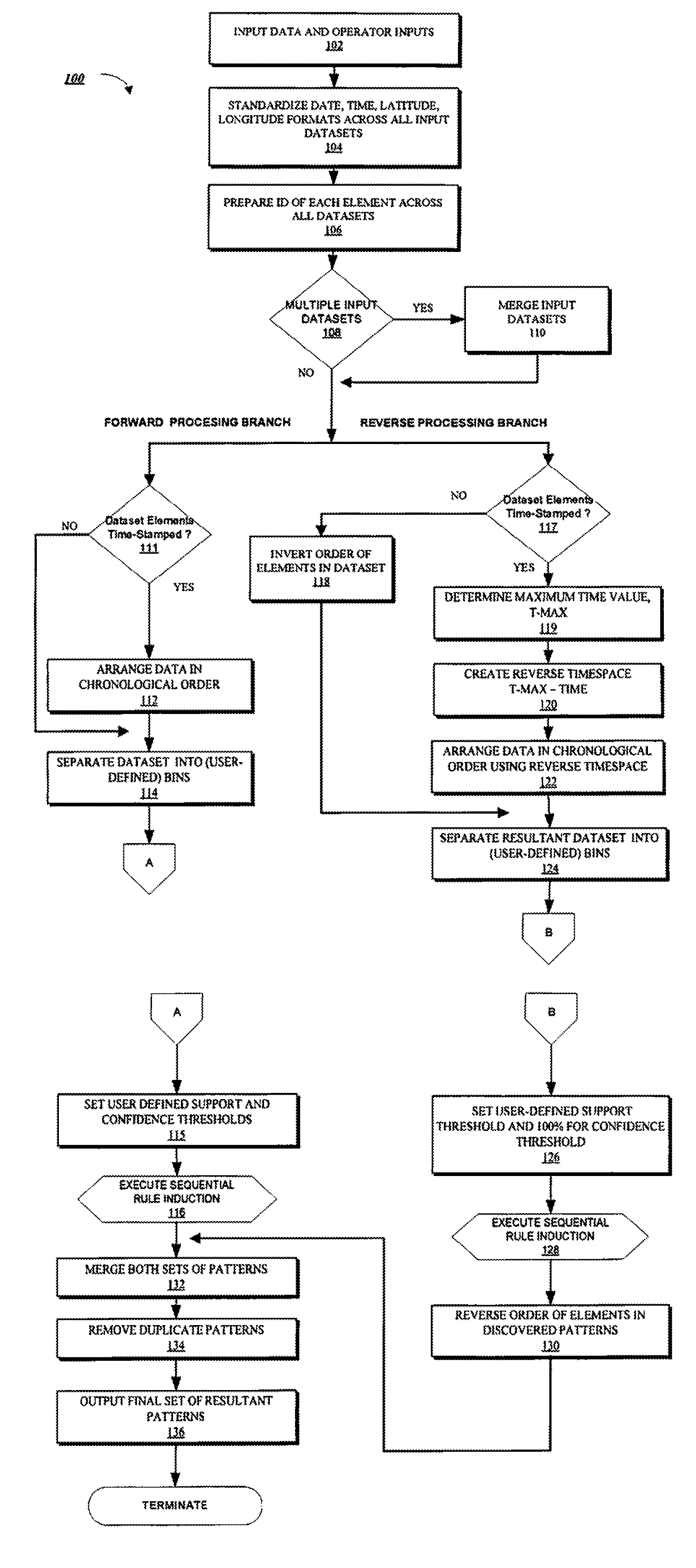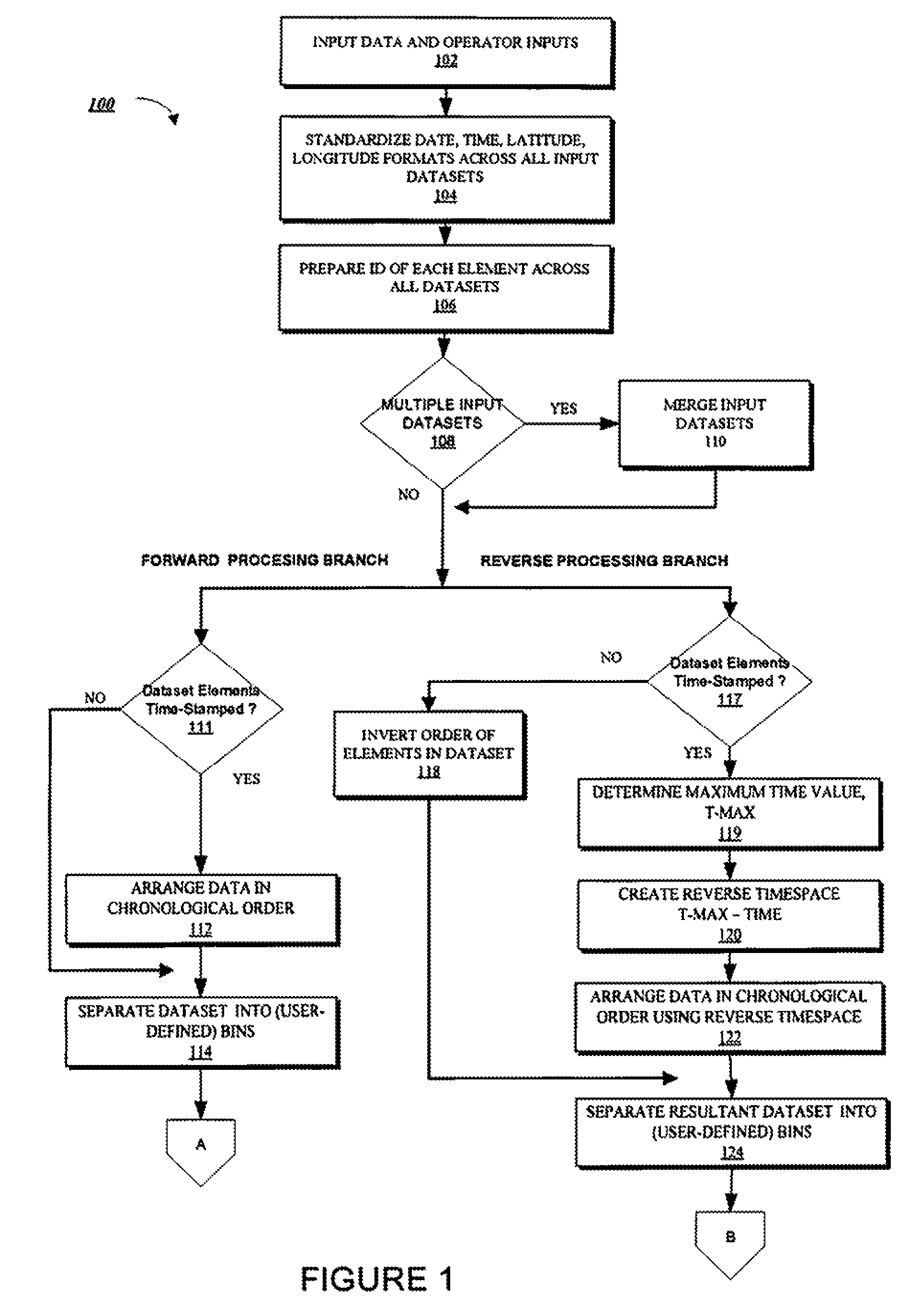Pattern discovery through reversing time flow
a technology of reversing time flow and pattern discovery, applied in the field of data mining, can solve the problems that human mind can only leverage its power on an infinitely small portion of collected data, and it is now an extremely complex challenge to know which are the pertinent data buried in the massive amount of collected data
- Summary
- Abstract
- Description
- Claims
- Application Information
AI Technical Summary
Benefits of technology
Problems solved by technology
Method used
Image
Examples
Embodiment Construction
[0002]This invention was made with U.S. Government support under contract no. 01-C4750. The U.S. Government has certain rights in the invention.
BACKGROUND OF THE INVENTION
[0003]1. Field of the Invention
[0004]The present invention relates generally to the field of data mining and, more particularly, to methods and systems for mining one or more structured datasets to automatically extract patterns or associations within the data.
[0005]2. Description of the Related Art
[0006]One of the growing, critical challenges facing the intelligence community is to produce actionable intelligence from massive (and still-increasing) datasets, in a decreasing amount of time. Current analysis tools, such as GALE (Generic Area Limitation Environment) or DCGS (Distributed Common Ground Systems), enable analysts to examine, and confirm or reject, hypotheses they have formed. These confirmatory methods and tools are a necessary part of intelligence analysis; however, they use a trial-and-error based appr...
PUM
 Login to View More
Login to View More Abstract
Description
Claims
Application Information
 Login to View More
Login to View More - R&D
- Intellectual Property
- Life Sciences
- Materials
- Tech Scout
- Unparalleled Data Quality
- Higher Quality Content
- 60% Fewer Hallucinations
Browse by: Latest US Patents, China's latest patents, Technical Efficacy Thesaurus, Application Domain, Technology Topic, Popular Technical Reports.
© 2025 PatSnap. All rights reserved.Legal|Privacy policy|Modern Slavery Act Transparency Statement|Sitemap|About US| Contact US: help@patsnap.com



